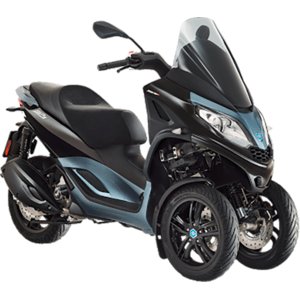Piaggio MP3 125 (2006–2011): The Three-Wheeled Revolution That Redefined Urban Mobility
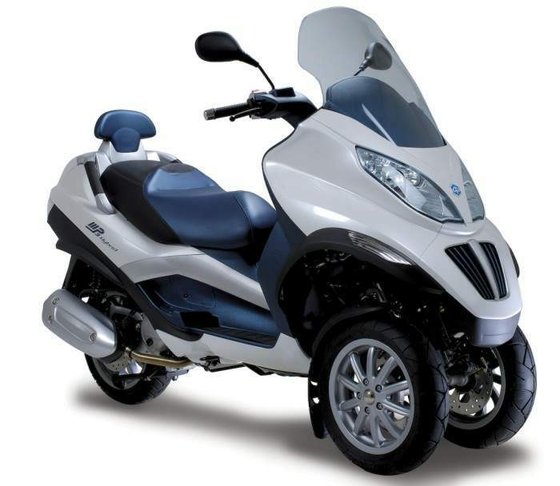
Introduction
When Piaggio launched the MP3 125 in 2006, it didn’t just release another scooter—it created a new category of urban mobility. With its dual front wheels, tilting suspension, and later, a hybrid powertrain option, the MP3 became a symbol of Italian innovation. Designed for riders who wanted the agility of a scooter with the stability of a car, this model generation (2006–2011) challenged conventions and carved out a loyal following. After spending time with a well-maintained 2009 MP3 125 Hybrid, it’s clear why this machine remains fascinating even years later.
Design & Ergonomics: A Quirky Masterpiece
The MP3’s design is impossible to ignore. The twin 12-inch front wheels, mounted on a parallelogram suspension system, give it a futuristic stance that still turns heads. Unlike traditional scooters, the front end leans like a motorcycle but resists tipping over when stationary—a feature that instills confidence at traffic lights or during parking maneuvers.
The bodywork is unapologetically bulky, with a wide handlebar and floorboards that accommodate riders up to 6'2" (188 cm) comfortably. The seat height of 30.7 inches (780 mm) is accessible for shorter riders, while the plush, bench-style saddle offers surprising support for two-up rides. Storage took a hit in the Hybrid version (due to battery placement), but the standard MP3 125 provides enough underseat space for a full-face helmet.
Build quality is typical of Piaggio: durable plastics, chrome accents, and a paint finish that resists urban grime. The dashboard—a mix of analog and digital displays—feels dated by modern standards but remains functional, showing hybrid power flow, fuel economy, and ride mode data.
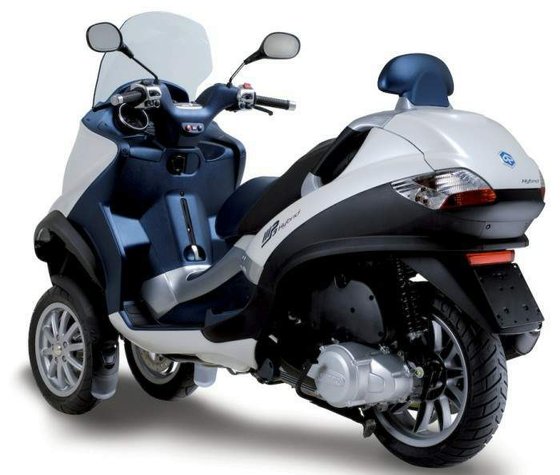
Riding Experience: Stability Meets Surprising Agility
Firing up the MP3 125 Hybrid reveals its party trick: near-silent electric-only propulsion. In "Eco" mode, the scooter glides forward with a faint whirr, reaching 20 mph (32 km/h) before the 125cc engine gently intervenes. Switch to "Power" mode, and the combined 15 hp (11 kW) petrol engine and 3.5 hp (2.6 kW) electric motor deliver a jolt of acceleration—0–60 mph (0–97 km/h) in ~5 seconds when fully charged.
The dual front wheels shine in corners. Leaning into a bend at 40° feels surreal initially, as the suspension arms articulate independently, absorbing bumps mid-corner without unsettling the chassis. Grip from the 120/70-12 front tires is immense, inspiring confidence on wet roads or gravel-strewn streets.
At 549 lbs (249 kg) for the Hybrid (439 lbs/199 kg for standard models), the MP3 isn’t light. Low-speed maneuvers require muscle, but the weight disappears once moving. The belt-driven CVT transmission is seamless, though the Hybrid’s added mass dulls responsiveness when the battery depletes.
Technology: Ahead of Its Time
1. Hybrid Powertrain (2009–2011 Models)
The MP3 Hybrid’s parallel system combines a 125cc four-stroke engine with a lithium-ion battery and 2.6 kW electric motor. Riders can choose:
- Electric-Only: 11 miles (18 km) range, ideal for emissions-restricted zones.
- Hybrid Modes: Prioritize efficiency, performance, or battery recharge.
Plugging into a standard outlet fully charges the battery in 3 hours—a novelty in 2009.
2. Ride-by-Wire Throttle
Introduced in 2008, this system eliminated throttle cables, optimizing fuel injection for smoother acceleration and 20% better fuel economy (1.7 L/100 km or 141 mpg).
3. Suspension Innovation
The front parallelogram setup uses four aluminum arms and two steering tubes, allowing 3.3 inches (85 mm) of travel. Paired with twin rear shocks (4.3 in/110 mm travel), it soaks up potholes that would rattle conventional scooters.
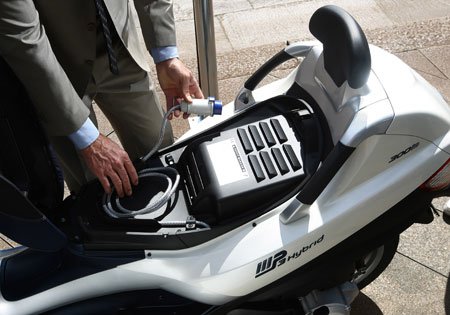
Competition: How the MP3 Stacks Up
1. Yamaha TMAX (2001–2011)
- Pros: Larger 499cc engine, sportier handling.
- Cons: Heavier, worse fuel economy (4.5 L/100 km/52 mpg), no hybrid option.
Verdict: The TMAX appeals to power seekers, but the MP3 dominates in efficiency and stability.
2. Honda SH125i (2002–2011)
- Pros: Lighter (298 lbs/135 kg), lower maintenance.
- Cons: Single front wheel lacks MP3’s confidence in poor conditions.
Verdict: A pragmatic choice, but lacks the MP3’s tech-forward identity.
3. Peugeot Metropolis 125 (2013–Present)
- Pros: Refined three-wheeler design, larger storage.
- Cons: Arrived later; MP3 pioneered the category.
Verdict: The Metropolis iterates on Piaggio’s blueprint but owes its existence to the MP3.
Maintenance: Keeping Your MP3 125 in Prime Condition
Critical Service Points
- Belt & Rollers: Replace every 12,500 miles (20,000 km). Opt for OEM or reinforced aftermarket belts for smoother acceleration.
- Hybrid Battery Care: If owning a Hybrid, cycle the battery monthly to prevent degradation. MOTOPARTS.store stocks replacement Li-ion packs.
- Front Suspension Lubrication: Grease the parallelogram joints every 6,000 miles (10,000 km) to prevent squeaks.
- Brake Pads: The dual 240mm front discs wear quickly in urban use. Ceramic pads reduce dust and improve wet-weather performance.
Upgrade Recommendations
- Windshield: A taller aftermarket screen reduces fatigue on highways.
- Rear Shock Absorbers: Upgrade to adjustable units for heavier loads.
- Hybrid Performance Tune: ECU remaps can optimize power delivery in older Hybrid models.
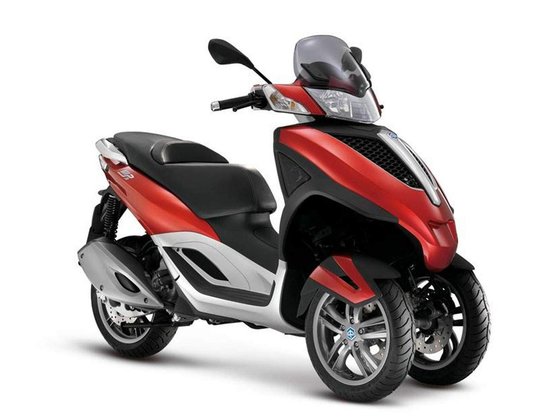
Conclusion: A Legacy of Innovation
The Piaggio MP3 125 (2006–2011) remains a benchmark for creative engineering. Its blend of stability, hybrid tech, and practicality makes it a compelling choice even today—whether navigating cobblestone streets or squeezing into packed parking lots. While later models have refined the formula, this generation’s boldness ensures its place in scooter history.
For owners looking to enhance their MP3, MOTOPARTS.store offers a curated selection of upgrades, from high-performance belts to premium suspension kits. Because even legends deserve a little fine-tuning.
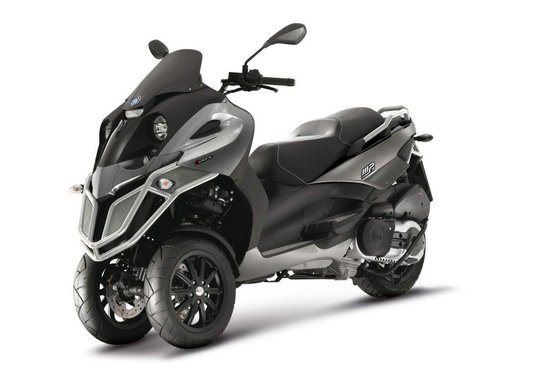






Specifications sheet
| Engine | |
|---|---|
| Stroke: | Four-stroke |
| Max power: | 11 kW | 15.0 hp |
| Max torque: | 12 Nm |
| Fuel system: | Electronic fuel injection (Ride by Wire) |
| Max power @: | 9250 rpm |
| Displacement: | 124 ccm |
| Max torque @: | 8500 rpm |
| Configuration: | Single |
| Cooling system: | Liquid cooled |
| Compression ratio: | 12.0:1 |
| Number of cylinders: | 1 |
| Hybrid system (2009 Hybrid model): | 2.6 kW electric motor, Lithium-ion battery (optional) |
| Dimensions | |
|---|---|
| Wheelbase: | 1490 mm (58.7 in) |
| Dry weight: | 199 |
| Wet weight: | 208 |
| Seat height: | 780 mm (30.7 in) |
| Overall width: | 760 mm (29.9 in) |
| Overall height: | 1490 mm (58.7 in) |
| Overall length: | 2140 mm (84.3 in) |
| Fuel tank capacity: | 12 L (3.2 US gal) |
| Drivetrain | |
|---|---|
| Clutch: | Centrifugal clutch |
| Final drive: | belt |
| Transmission: | VT automatic transmission |
| Maintenance | |
|---|---|
| Rear tire: | 140/70-12 |
| Engine oil: | 5W40 |
| Front tire: | 2 x 120/70-12 |
| Brake fluid: | DOT 4 |
| Spark plugs: | NGK CR8EB or NGK CR8EIX |
| Spark plug gap: | 0.6 |
| Final drive oil: | 150 ml 80W-90 |
| Coolant capacity: | 1.9 |
| Engine oil capacity: | 1.2 |
| Engine oil change interval: | Every 10,000 km or annually |
| Valve clearance (intake, cold): | 0.10 mm |
| Valve clearance check interval: | 10,000 km (6,200 mi) |
| Valve clearance (exhaust, cold): | 0.20 mm |
| Recommended tire pressure (rear): | 2.0 bar (29 psi) solo / 2.4 bar (35 psi) loaded |
| Recommended tire pressure (front): | 1.6 bar (23 psi) solo / 1.8 bar (26 psi) loaded |
| Chassis and Suspension | |
|---|---|
| Frame: | High-strength tubular steel twin cradle |
| Rear brakes: | Single 240 mm disc, 1-piston caliper |
| Front brakes: | 2 x 240 mm discs, 2-piston calipers |
| Rear suspension: | Two dual-action hydraulic shocks, adjustable spring preload |
| Front suspension: | Parallelogram four-aluminum-arm system with cantilever suspension |
| Rear wheel travel: | 110 mm (4.3 in) |
| Front wheel travel: | 85 mm (3.3 in) |
| Hybrid Specifications (2009 LT Model) | |
|---|---|
| Hybrid modes: | Electric-only, Performance, Economy, Recharge |
| Charging time: | 3 hours (standard outlet) |
| Electric-only range: | 11 km (6.8 mi) |
| Electric motor power: | 2.6 kW (3.5 hp) |
| Combined system output: | 13.6 kW (18.3 hp) |



